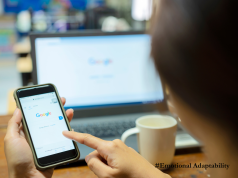The global pandemic has left an indelible mark on the world of work and, by extension, on workers themselves. As we navigate this post-pandemic landscape, the concept of work-life balance has emerged as a crucial, yet elusive, goal for many professionals. Once a clear-cut line, the boundary between personal life and work has been blurred—almost erased—in the forced march towards remote work. But what lessons have we learned and how can we apply them to redefine a better balance in our lives?
In this age of endless Zoom calls, 24/7 email notifications, and the newfound ‘home office,’ employees and employers alike are struggling to find equilibrium. It’s time we collectively pause and reset our understanding of work-life balance, building frameworks that not only prevent burnout but actively promote well-being and productivity.
For employers, this means adopting flexible schedules that recognize the diversity of employees’ circumstances. A one-size-fits-all approach to scheduling is both archaic and ineffectual in today’s varied working environments. Employers should encourage employees to design work schedules that accommodate their personal responsibilities, be it childcare, education, or mental health breaks. This flexibility can increase job satisfaction, reduce stress, and ultimately lead to a more engaged and productive workforce.
Nonetheless, flexibility alone isn’t the panacea for the work-life conundrum. Employers must also set clear expectations around availability and responsiveness. The ground rules for communication outside of standard working hours need to be reestablished, guarding against the assumption that remote work equals constant accessibility. A culture that respects personal time not only fosters better work-life balance but also sets a precedent for organizational trust and respect.
Company policies should also support continuous professional development and encourage ‘unplugging’ without repercussions. By offering initiatives such as wellness programs, mental health days, and opportunities for remote or hybrid work, companies can demonstrate a genuine investment in their employees’ holistic well-being.
On the other side of the equation, employees have a role to play in redefining their work-life balance. It’s essential to establish personal boundaries, designating specific times for work and rest, and creating physical delineations between workspaces and living spaces where possible. Self-management techniques like time-blocking and prioritization can help ensure that not every moment of the day is spent in service of job-related tasks.
Moreover, workers should take full advantage of the benefits and programs offered by their employers. From attending therapy sessions to engaging in mindfulness and exercise routines sponsored by their workplace, employees can and should be proactive in managing their well-being.
In this collective journey towards a redefined work-life balance, technology also plays a significant role. Tools that support collaboration, time management, and boundary-setting can be invaluable allies—if used judently. At the same time, organizations must guard against the digital encroachment of work into personal time, ensuring that technology serves to liberate rather than constrain.
In conclusion, the post-pandemic world offers us a unique opportunity to reshape our work-life paradigms. Employers and employees alike must engage in open dialogue, set realistic boundaries, and develop comprehensive policies that underscore a shared commitment to well-being and productivity. By doing so, we can turn the lessons of the pandemic into a blueprint for a healthier, happier, and more sustainable working future.





























